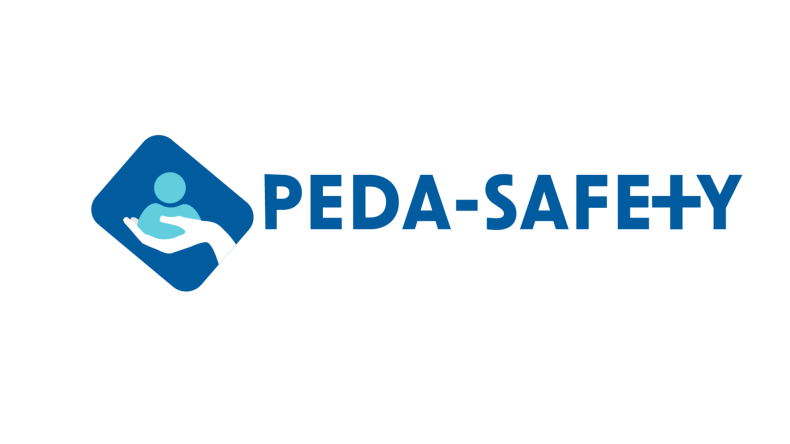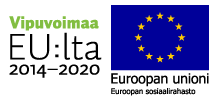PEDA-Safety

PEDA-Safety: Digital training in patient and customer safety provides quality for social welfare and health care.
The PEDA-Safety project aims at strengthening the digital skills of health care professionals and students. This will be achieved by creating a digital training model, which will strengthen the patient safety skills of professionals and students. The project will also test the use of a digital incident reporting system teaching tool, which will strengthen the use of the digital incident reporting system.
The COVID-19 pandemic has increasingly highlighted the need to strengthen digital literacy through digital training
models. Digital leap is now happening quickly and compulsively. The advantage of fully digital education is that they can be implemented without being tied to time and place. Strengthening digital skills plays a key role in ensuring the high-quality implementation of incident reporting. The need to develop digital training and authentic training materials to meet the needs of working life has been identified in discussions with patient safety expert networks. Nevertheless, digital training content on patient safety has not been produced in the past and is not openly available. The project responds to this identified need by producing a digital training model and digital training content. For example, digital capability training related to the incident reporting system used in the workplace should enable the most authentic using a pedagogical tool. During the project and in the development of the digital education model and content, gender neutrality and a gender perspective will be taken into account.
The main goal of the project is achieved:
1) The content areas of patient safety in social and health care have been defined as the basis for the design of the digital education model, by finding out the most current training needs, on the basis of information provided by experts.
2) A digital training model with its content areas has been created for social and health care professionals and
students on patient safety, which enables studying, evaluating one's own activities and continuous learning for social and health care professionals and students, strengthening their skills.
a) digital skills
b) patient safety
c) how to use and utilize the electronic incident reporting system to develop its own operations, organization and
customer and patient work;
3) Implement a digital education model for social and health care experts and students. Engage users during the
project to test, perform, and evaluate effectiveness competence in patient safety is assessed using an electronic
training model.
The duration of the project is about 1.5 years. The sub-objectives of the project will be addressed through the following measures and work packages:
1) Defining the content areas of the digital education model,
2) Creating a digital training model that allows social and health care professionals and students to study, evaluate
their own activities and learn continuously, strengthening their skills,
3) Piloting a unified digital education model and digital content, as well as a trial use of the training tool and evaluation of the development of digital skills by social and health care professionals and students
4) Dissemination and communication of project results.
The main result of the project is the growth of the skills of social and health care professionals and students in terms of digital skills and patient safety through a digital education model. As a result of the project, social and health care professionals and students will be able to utilize digital training material and a digital incident reporting system in their own work and its development.
In addition, the project will results are
A) a new type of digital training model that supports the strengthening of digital skills related to patient safety and the use of the reporting system
B) an openly accessible
The PEDA-Safety project aims at strengthening the digital skills of health care professionals and students. This will be achieved by creating a digital training model, which will strengthen the patient safety skills of professionals and students. The project will also test the use of a digital incident reporting system teaching tool, which will strengthen the use of the digital incident reporting system.
The COVID-19 pandemic has increasingly highlighted the need to strengthen digital literacy through digital training
models. Digital leap is now happening quickly and compulsively. The advantage of fully digital education is that they can be implemented without being tied to time and place. Strengthening digital skills plays a key role in ensuring the high-quality implementation of incident reporting. The need to develop digital training and authentic training materials to meet the needs of working life has been identified in discussions with patient safety expert networks. Nevertheless, digital training content on patient safety has not been produced in the past and is not openly available. The project responds to this identified need by producing a digital training model and digital training content. For example, digital capability training related to the incident reporting system used in the workplace should enable the most authentic using a pedagogical tool. During the project and in the development of the digital education model and content, gender neutrality and a gender perspective will be taken into account.
The main goal of the project is achieved:
1) The content areas of patient safety in social and health care have been defined as the basis for the design of the digital education model, by finding out the most current training needs, on the basis of information provided by experts.
2) A digital training model with its content areas has been created for social and health care professionals and
students on patient safety, which enables studying, evaluating one's own activities and continuous learning for social and health care professionals and students, strengthening their skills.
a) digital skills
b) patient safety
c) how to use and utilize the electronic incident reporting system to develop its own operations, organization and
customer and patient work;
3) Implement a digital education model for social and health care experts and students. Engage users during the
project to test, perform, and evaluate effectiveness competence in patient safety is assessed using an electronic
training model.
The duration of the project is about 1.5 years. The sub-objectives of the project will be addressed through the following measures and work packages:
1) Defining the content areas of the digital education model,
2) Creating a digital training model that allows social and health care professionals and students to study, evaluate
their own activities and learn continuously, strengthening their skills,
3) Piloting a unified digital education model and digital content, as well as a trial use of the training tool and evaluation of the development of digital skills by social and health care professionals and students
4) Dissemination and communication of project results.
The main result of the project is the growth of the skills of social and health care professionals and students in terms of digital skills and patient safety through a digital education model. As a result of the project, social and health care professionals and students will be able to utilize digital training material and a digital incident reporting system in their own work and its development.
In addition, the project will results are
A) a new type of digital training model that supports the strengthening of digital skills related to patient safety and the use of the reporting system
B) an openly accessible
Project period
-
Project state
Finished
Project area
National
Project funding
ESR 2014-2020 Flat Rate

LAB role
Lead partner
Unit
Health Care and Social Services
Project focus area
Human well-being




